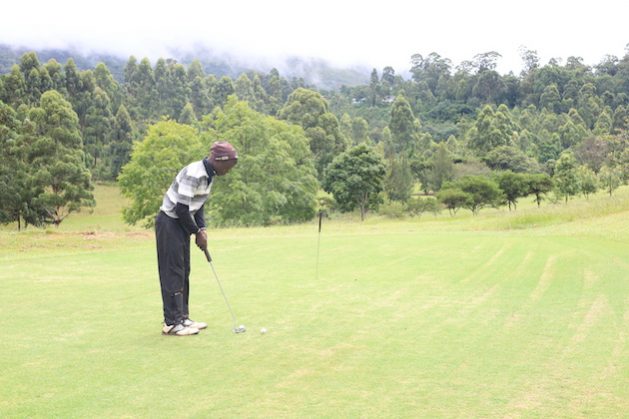A Last-Ditch Effort to Save a High Seas Treaty from Sinking — Global Issues
UNITED NATIONS, Feb 20 (IPS) – When the United Nations began negotiations on a legally binding treaty to protect and regulate the high seas, one diplomat pointedly remarked: “It’s a jungle out there”—characterizing a wide-open ocean degraded by illegal and over-fishing, plastics pollution, indiscriminate sea bed mining and the destruction of marine eco-systems.
Although the origins of the proposed treaty go back to 2002, the initial negotiations began in 2018, with a new round scheduled to take place February 20 through March 3.
The discussions will include four elements of the 2011 package that have guided the negotiations, namely marine genetic resources (MGRs), questions on benefit-sharing, area-based management tools (ABMTs), marine protected areas (MPAs), environmental impact assessments (EIAs), capacity building and the transfer of marine technology (CB&TT).
Without a strong Treaty, says Greenpeace, it is practically impossible to protect 30% of the world’s oceans by 2030: the 30×30 target which was agreed at COP15 in Montreal in December 2022.
Dr Laura Meller, Oceans Campaigner and Polar Advisor, Greenpeace Nordic said:
“The oceans support all life on Earth. Their fate will be decided at these negotiations. The science is clear. Protecting 30% of the oceans by 2030 is the absolute minimum necessary to avert catastrophe. It was encouraging to see all governments adopt the 30×30 target last year, but lofty targets mean nothing without action.”
“This special session taking place so soon after the last round of negotiations collapsed gives us hope,” she said.
“If a strong Treaty is agreed on the 3rd of March, it keeps 30×30 alive. Governments must return to negotiations ready to find compromises and deliver an effective Treaty. We’re already in extra time. These talks are one final chance to deliver. Governments must not fail,” she declared.
Dr Palitha Kohona, former co-Chair, UN Ad Hoc Working Group on Biological Diversity Beyond National Jurisdiction, told IPS even though the goal of the UN Preparatory Committee is clear, the details have bedevilled negotiating parties.
As during previous negotiations on shared global resources, he said, it is the difficulty involved in making compromises on the “key issues of financing and monetary benefit- sharing from Marine Genetic Resources” exploitation that has prevented the conclusion of the much-anticipated binding legal instrument.
“While the conservation of marine biological diversity is a priority for the globe, and is consistent with the SDGs, the developing world feels (with considerable justification) that they should also have access to the wealth that is expected to flow (gush) from the exploitation of marine genetic resources.”
Past negative experiences of missing out on new and lucrative developments, colour the thinking of the developing world. If both sides are to emerge with a win/win outcome, compromises will have to be made, he argued.
“The precedent of the Sea Bed Authority and the many environmental treaties could be adapted to the needs of the proposed treaty. Imaginative and ambitious thinking is required”.
Given the dire situation confronting the oceans and the unimaginable consequences for humanity of a collapse of the biological resources of the oceans, (small scale fisherfolk, especially in poor countries are crying for a positive outcome, where the protein intake comes mainly from the oceans), “let us hope that pragmatic compromises could be arrived at the next round of negotiations”, said Dr Kohona, a former Sri Lankan Ambassador to the UN and current envoy in Beijing.
More than 50 High Ambition Coalition countries promised a Treaty in 2022 and they failed. Many of the self-proclaimed ocean champions from the Global North refused to compromise on key issues such as financing and monetary benefit sharing from Marine Genetic Resources until the final days of talks. They offered too little, too late, said Greenpeace.
The sticking points which must be resolved are on finance, capacity building and the fair sharing of benefits from Marine Genetic Resources. Resolving these impasses depends on the Global North making a fair and credible offer to the Global South
Asked about the primary issues holding up the final treaty, James Hanson, a Greenpeace spokesperson, told IPS finding an agreement will largely depend on a fair agreement on the finance behind supporting developing nations to implement the Treaty (how much money, and who will be paying?) and finding a fair compromise on the sharing of monetary benefits from marine genetic resources.
The key to resolving these issues will be High Ambition Coalition countries returning to the table with a credible and timely offer on both issues. These countries are the ones which have committed to delivering a Treaty, and so the onus is on them to compromise to get a Treaty over the line.
China also will have a crucial role to play as a power broker, holding significant sway over many developing nations. China’s welcomed flexibility at the last round of talks on ABMTs is encouraging, and we hope this continues at this next round of talks.
China’s position on MGRs is still at odds with the EU’s, and this impasse must be resolved through compromise on both sides.
Asked whether he expects the outstanding issues to be resolved in the current sessions, Hanson said there seems to be willingness and desire from all sides to deliver a Treaty at this last round of talks.
“The progress made last time, and this special session being called so soon after the last round of talks failed, gives us hope. We encourage countries to return to the table with willingness to compromise and seek agreement, for the sake of the oceans,” he declared.
Pepe Clarke, Oceans Practice Leader at WWF International said: “For most people, the high seas are out of sight, out of mind. But the ocean is a dynamic mosaic of habitats, and the high seas play an important role in the healthy functioning of the whole marine system.”
With two-thirds of the ocean falling outside national waters, a High Seas Treaty is an essential precondition for protecting 30% of marine areas worldwide, he noted.
“We have a chance to achieve a global, legally binding agreement that would address the current gaps in international ocean governance. We’re optimistic the COP15 biodiversity agreement will provide the shot in the arm needed for governments to get this important agreement over the line,” Clarke noted.
The waters beyond national jurisdiction, known as the high seas, comprise nearly two-thirds of the ocean’s area, but only roughly 1% of this huge swathe of the planet is protected, and even then often with little effective management in place.
The high seas play a key role for many important species of sharks, tuna, whales and sea turtles, and support billions of dollars annually in economic activity.
Jessica Battle, Senior Global Ocean Governance and Policy Expert, who is leading WWF’s team at the negotiations, said overfishing and illegal fishing, habitat destruction, plastic and noise pollution, as well as climate change impacts, are all rife in the high seas.
“Heavily subsidized, industrial fishers seek to exploit and profit from ocean resources that, by law, belong to everyone. It’s a tragedy of the commons.”
She said a legally binding High Seas Treaty would help to break down the current silos between isolated management bodies, and result in less cumulative impacts and better cooperation across the ocean – it would create a forum where all ocean issues can be discussed as a whole.
“The high seas, the wildlife that migrates through these waters, and the climate-regulation functions of the ocean need urgent protection from both current and new threats, such as deep sea mining,” declared Battle.
IPS UN Bureau Report
Follow @IPSNewsUNBureau
Follow IPS News UN Bureau on Instagram
© Inter Press Service (2023) — All Rights ReservedOriginal source: Inter Press Service
Check out our Latest News and Follow us at Facebook
Original Source







